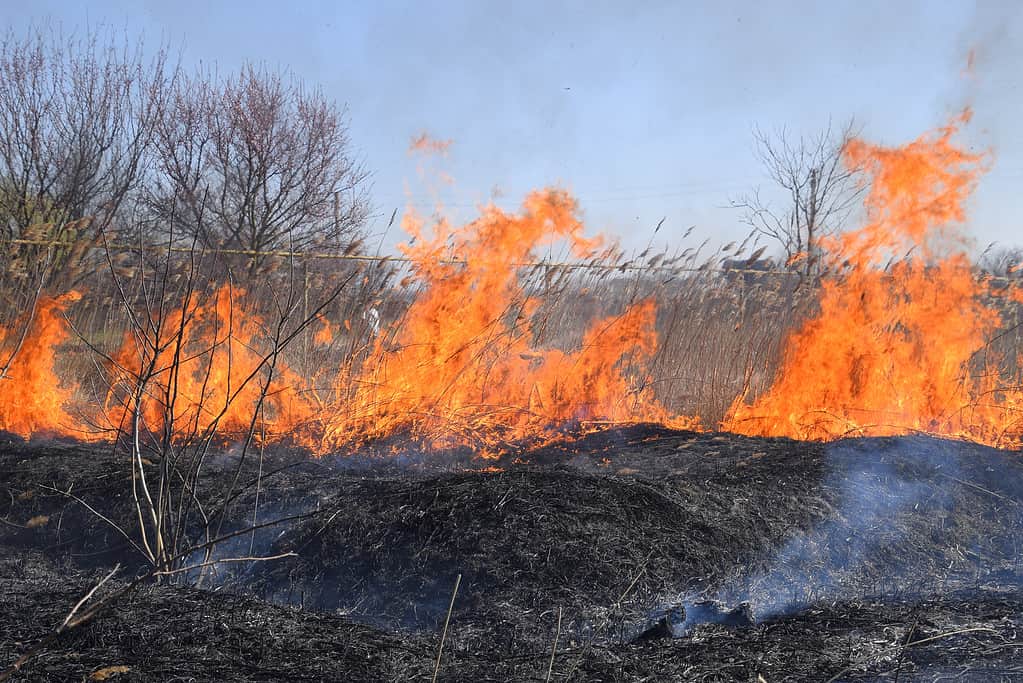
Fire can spread very quickly as long as they have oxygen to keep them going and material to burn.
©Leonid Eremeychuk/iStock via Getty Images
Fire is the primordial source of heat in human history. It was there at the dawn of time, lighting humanity’s way through the dark forests. Fire kept the early hunter-gatherers warm during brutal winter nights. Humans use it every day to cook their food, shape metals, and construct new inventions to push humanity farther.
How hot is fire? How hot is the hottest flame? What do the colors of each flame mean? Is there anything fire cannot melt? This article uncovers the answers to these questions.
Fire in Human History
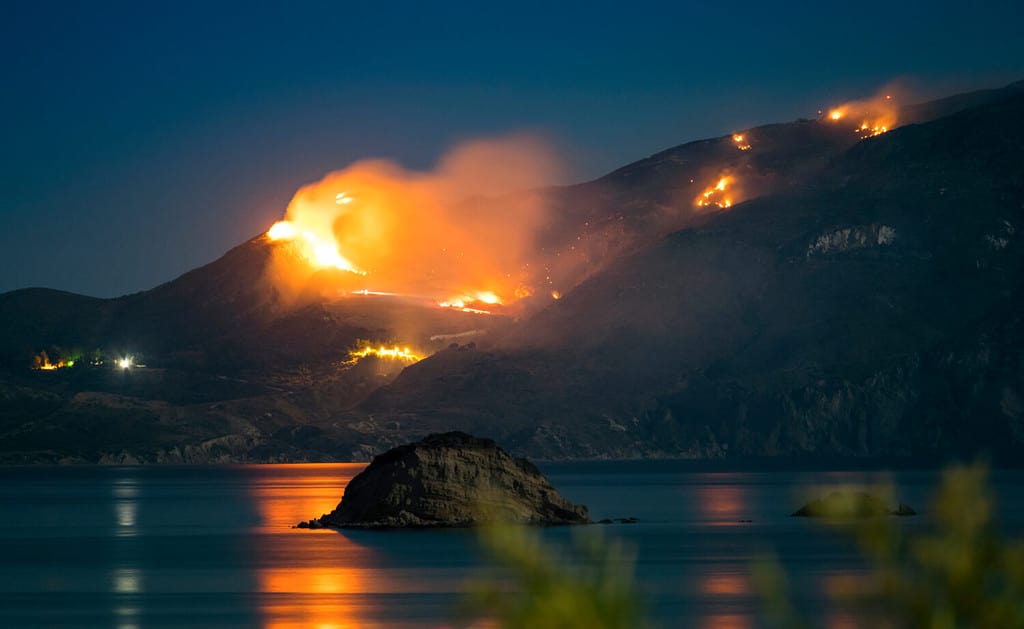
©Burben/Shutterstock.com
Fires can happen naturally from lightning strikes, storms, or erupting volcanoes, during which magma ignites nearby surroundings.
It was approximately one million years ago that humans first started using fire actively. Anthropologist and primatologist Richard Wrangham discusses a “cooking theory,” which states that the control of fire to cook food escalated the creation of modern humanity.
Today, humans use fire to heat homes, cook food, create massive structures, and refine metals for technological purposes.
What is Fire?

Fires were a common source of heat before the invention of internal heating systems in houses.
©Rawf8/iStock via Getty Images
Fire is the culmination of a specific chemical reaction. It is the combustion between a fuel source and oxygen. The chemicals from a fuel source react with oxygen in the air or from an external source to create fire.
To achieve combustion, the fuel must be heated to a specific temperature. This temperature is the fuel’s ignition temperature (the point at which the fuel ignites).
Oxygen determines how fast or slow the reaction will occur. High oxygen levels trigger the fuel to sustain itself to cause the fuel to burn. Low oxygen levels will cause the flame to slowly die out and turn to smolders before it is extinguished.
Flames are the visual representation of charged atoms, molecules, and electrons releasing energy.
How Hot is Fire?
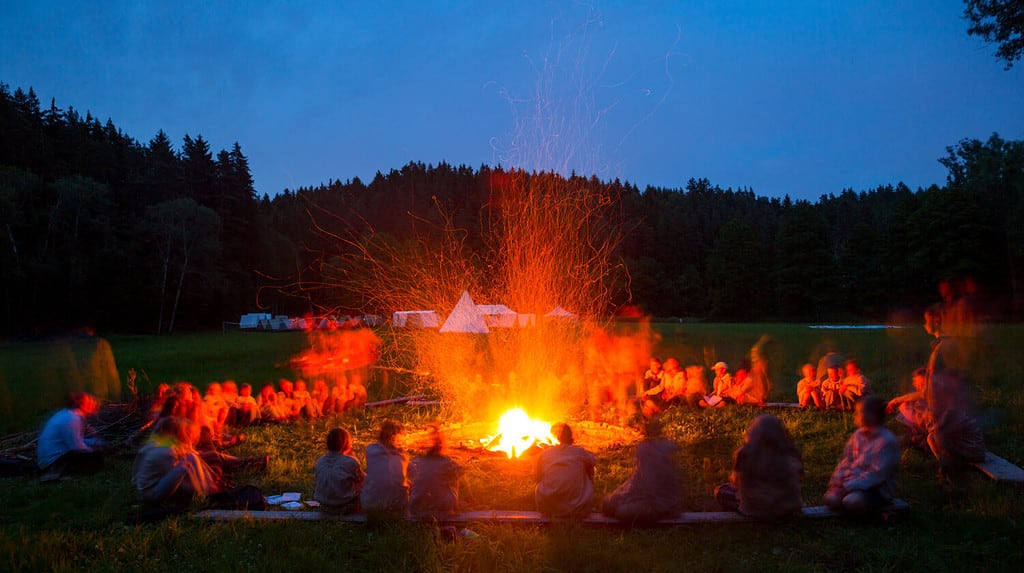
Summer programs teach fire safety and the differences between burning and melting objects.
©Vojtech Mucha/Shutterstock.com
To quote the infamous Professor Farnsworth from Futurama, “Fire indeed hot.” It is common knowledge that fire is hot, but the temperature will vary depending on multiple factors.
Factors that change the temperature of fire are:
- Chemical composition of the fuel
- Amount of oxygen available
- Reactivity of the combustion
For example, gas fires burn hotter than wood fires. Gas has a different chemical composition, which produces lighter flames that burn longer when plenty of oxygen is available. Wood fires burn slowly and are less hot because wood’s composition is not as reactive. Alternatively, different types of wood burn hotter than others because the composition of different trees make it burn at different levels.
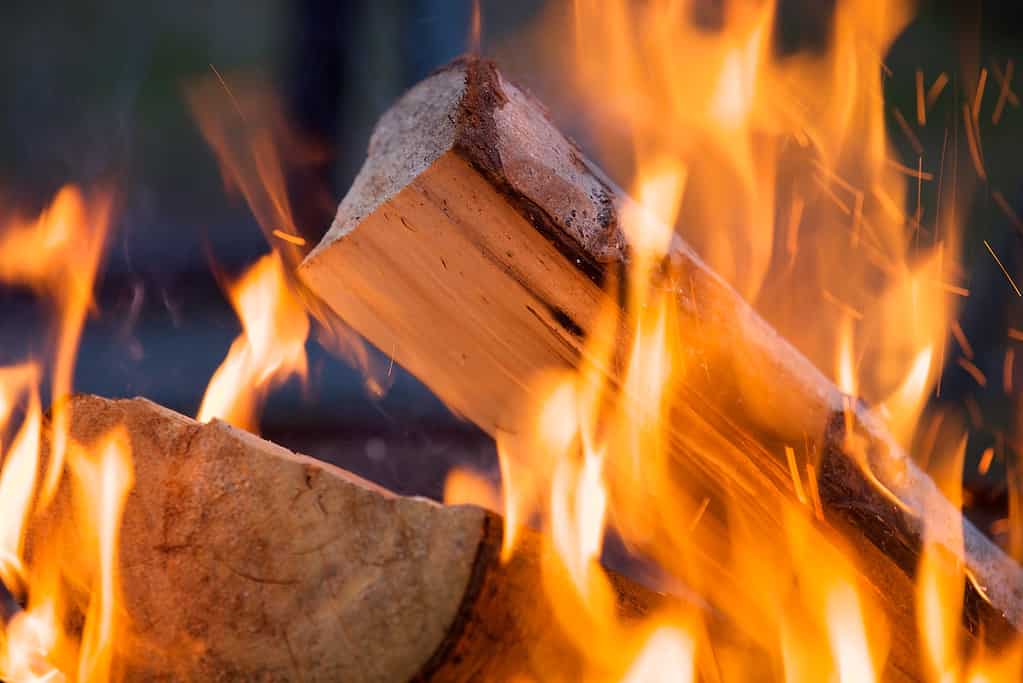
Wood has a thick composition, allowing fire to sustain itself for longer periods of time.
©iStock.com/Vitelle
How Hot Do Wood Fires Burn?
On average, wood fires reach a peak temperature of 2012 degrees Fahrenheit. However, wood rarely reaches those temperatures unless continuous external fuel and oxygen are added. Typically, wood burns at lower temperatures than other sources.
Temperature of Burning Wood
| Type of Wood | Average Temperature in Fahrenheit | Average Temperature in Celsius |
|---|---|---|
| Pine | 660 | 348.8 |
| Fir | 662 | 350 |
| Cedar | 670 | 354.4 |
| Redwood | 687 | 363.8 |
| Spruce | 1148 | 620 |
| Birch | 1500 | 815.5 |
| Oak | 1652 | 900 |
| Beech | 1742 | 950 |
Wood oven fires reach temperatures of 700 degrees Fahrenheit, while traditional ovens heat up to 450-500 degrees Fahrenheit.
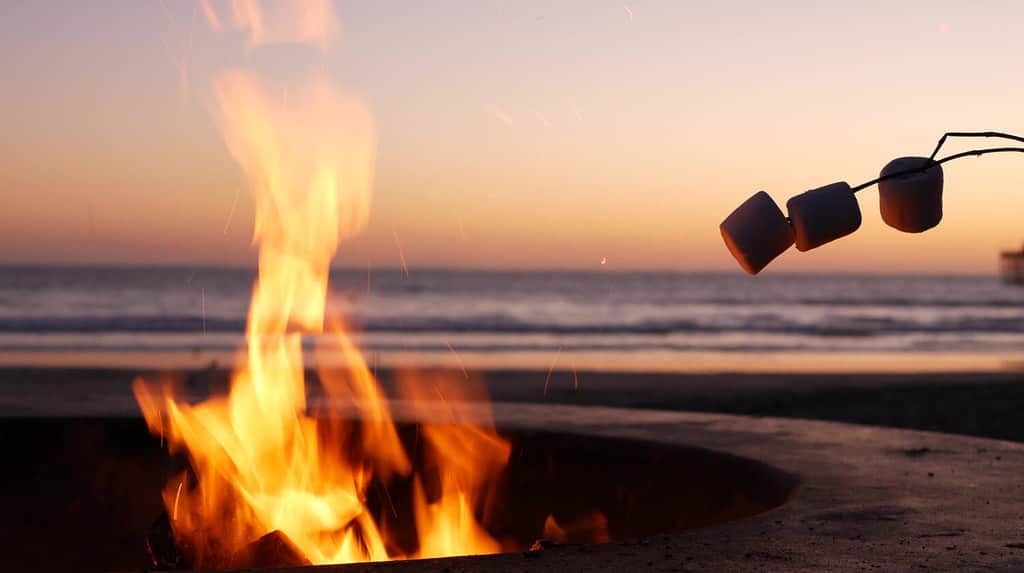
Barbeques lit with chemicals, wood, or coal create a pleasant atmosphere to relax or cook food.
©Dogora Sun/Shutterstock.com
How Hot Do Chemical Fires Burn?
Chemical fires are highly dangerous due to how easily chemicals catch fire. All flammable chemicals must have a warning label indicating how to prevent accidents. Chemical fires reach high temperatures, easily causing severe burns to anyone unfortunate to be caught in the blaze.
Temperature of Chemical Fuels
| Chemical Source | Average Temperature in Fahrenheit | Average Temperature in Celsius |
|---|---|---|
| Propane | 3560 | 1960 |
| Acetylene | 400-5730 | 2204.4-3165.5 |
| Oxyhydrogen | 5070 | 2798.9 |
Propane is a common chemical found in homes to heat water, cook food, and refrigerate food. This is why many kitchen appliances come with a flammable warning and why kitchen fires ignite quickly.
Lastly, coal is another household fuel material. Coal burns at 3500 degrees Fahrenheit or 1926.7 degrees Celsius.
What Can Fire Melt?
Most people believe fire can melt anything. However, not everything can melt. The ignition point of a material determines if the object will melt or burn.
A simple lesson to remember is that everything can burn, but only certain items melt.
Burning vs. Melting
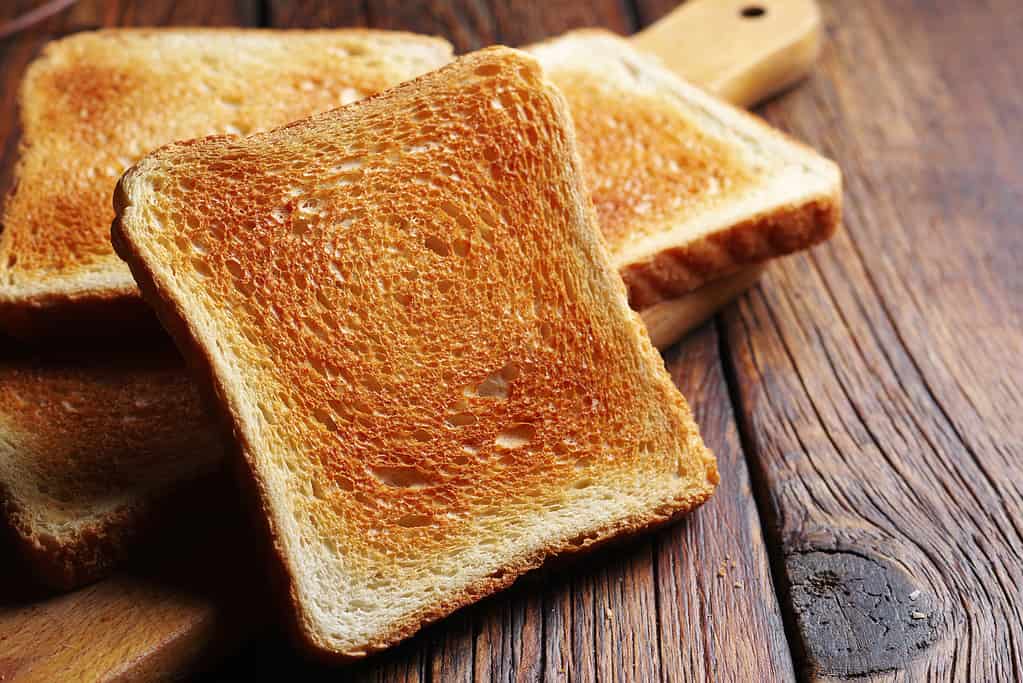
A heated piece of bread becomes toast, a solid object with a different chemical composition.
©SasaJo/iStock via Getty Images
First, it is important to know the differences between burning and melting. Burning is a chemical reaction wherein a material is chemically altered into a different substance. The different substance is “burnt.” Simply put, the material is chemically changed and takes on a new form.
Examples of burnt chemical changes are:
- Bread becoming toast
- Wood becoming ash
- Clothing becoming burnt fibers
- Coal becoming burnt coal
The material maintains a solid structure despite being reduced or altered in size and shape.

Ice cream melts easily but maintains its chemical composition of flavored sugar.
©Foxys_forest_manufacture/iStock via Getty Images
Melting is a chemical reaction wherein material undergoes a state of matter change, but the material itself remains the same. In this case, the object completely changes, but the chemical composition of the material is the same. The simplest example of this is ice melting into water. The ice changes from a solid to a liquid, but the chemical makeup remains the same.
An object must have a melting point for it to melt. A melting point is the temperature at which a solid will change form to a liquid. Objects like clothing, wood, and coal do not burn hot enough to melt.
Examples of objects that melt are:
| Object | Melting Point in Fahrenheit | Melting Point in Celsius |
|---|---|---|
| Ice cream | 32 | 0 |
| Chocolate | 86-90 | 30-32.2 |
| Butter | 90-95 | 32.2-35 |
| Plastics | 350-500 | 176.7-260 |
| Aluminum | 1220 | 660 |
| Gold | 1950 | 1065.6 |
| Steel | 2500-2800 | 1371.1-1537.8 |
| Glass | 2700-3100 | 1482.2-1704.4 |
| Graphite | 6740 | 3726.7 |
| Diamond | 7280 | 4026.7 |
Hafnium carbonitride is a compound with the highest melting point on record. It has a melting point temperature of 7232 degrees Fahrenheit or 4000 degrees Celsius. Diamond melts at a higher point, but it is a natural mineral, while hafnium carbonitride is a compound.
Colors of Fire
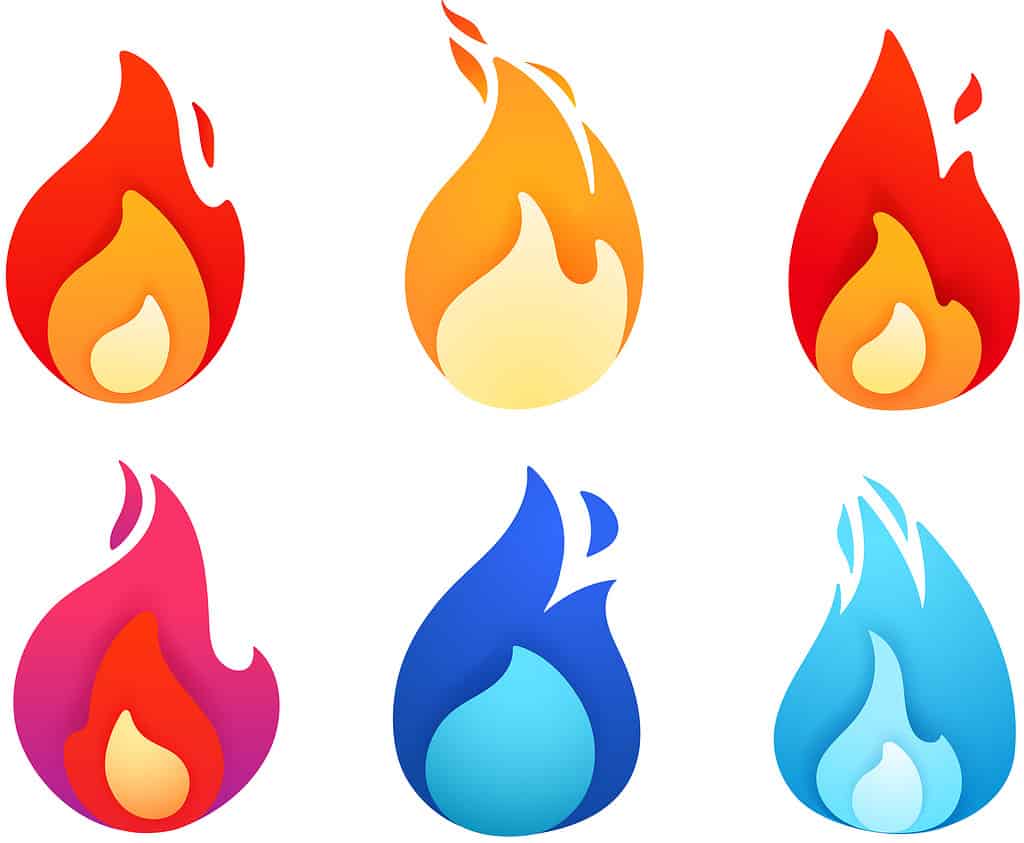
Flames contain layers of temperatures as they burn, creating a variety of colors viewers can marvel at.
©tovovan/iStock via Getty Images
Fires are marvelous to witness because of the many colors produced by the flame. The color of fire is an indicator of how hot the flame is.
| Flame Color | Temperature in Fahrenheit | Temperature in Celsius |
|---|---|---|
| Red | 900-1800 | 482.2-982.2 |
| Orange | 2000 | 1093.2 |
| Yellow | 2200 | 1204.4 |
| White | 2400-2700 | 1315.5-1482.2 |
| Blue | 2600-3000 | 1426.6-1648.9 |
Gas stoves are very hot, which is why it is common for them to emit blue flames. Candles can emit blue flames as well, but usually only at the base of the flame. As the flame rises, it loses energy and heat, culminating in the bright and peaceful colors of orange and yellow.
Burned by Fire
Fire accidents happen every day and people suffer from moderate to severe burns. Burns are ranked on a first-, second-, third-, and fourth-degree scale.
- First-Degree Burns: A first-degree burn only affects the outer skin. The skin will turn red and possibly form blisters. The burn sight will be painful to touch. First-degree burns are “superficial” burns.
- Second-Degree Burns: A second-degree burn affects the outer and inner layers of the skin. The skin becomes bright red and swollen, with blisters that are painful to touch. Second-degree burns are “partial thickness” burns.
- Third-Degree Burns: A third-degree burn severely harms the skin, reaching the muscle tissue underneath. The wound will look white or black with clear signs of burn damage. It is very painful and highly likely to leave deep burn scars. Third-degree burns are “full thickness” burns.
- Fourth-Degree Burns: A fourth-degree burn penetrates all the skin layers, reaching into the muscle tissue and possibly bone. All nerve endings are destroyed where the pain is severe until it goes numb.
Fire Safety
Burns to any degree are painful. Anyone handling or working with fire must be aware of what they are doing at all times to prevent accidents.
According to the National Fire Protection Association, follow these tips when handling fire:
- Call for help from the police or fire department when a fire is out of control.
- Always pay attention to flammable objects near open flames.
- Never leave open flames unattended.
- Keep matches and lighters out of reach of children.
- Have a fire safety plan in case of emergencies.
Wrap Up
Fire is a natural phenomenon that humans wield to improve and evolve. It is beautiful, yet dangerous to anyone acting careless or reckless in its presence. While everything can burn, not everything can melt. People working with fire should understand fire safety and methods of self-protection.
Thank you for reading! Have some feedback for us? Contact the AZ Animals editorial team.








